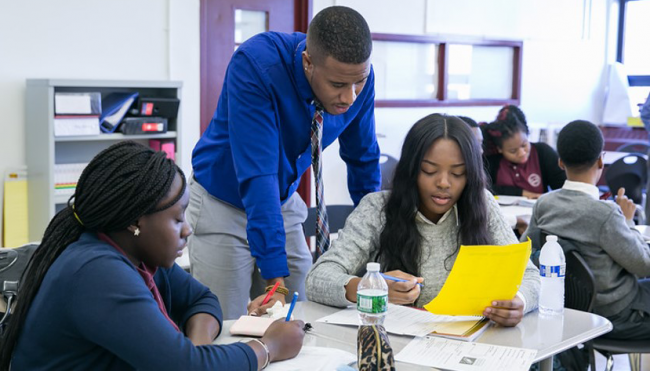
For 2022-2023, we will offer participating schools access to our 34 book units. Click HERE to see a full list of our novel units. We believe that five book units will provide for a full year’s curriculum consisting of carefully planned daily lessons that are challenging, knowledge rich, and writing-intensive. This year, participating schools may choose to pilot any of the novel units to create their ideal scope and sequence.
We believe that building strong lifelong readers is rooted in a novel centric curriculum with frequent and varied opportunities for reading and writing. Each curriculum unit is knowledge driven building background knowledge in both the short and long term. From a short-term perspective, we infuse our lessons with directly useful knowledge to increase how much students understand of and learn from what they read. From a long-term perspective, we seek to build a strong base of knowledge that increases student understanding of important ideas and concepts that they will encounter in the future. Within each unit, we identify key vocabulary to support plot comprehension and depth of word knowledge as well as technical vocabulary, like juxtaposition and motif, to support student analysis of literature. We read in three different ways ensuring the text is at the center of every lesson with opportunities for regular practice at close reading in small high quality doses. We follow reading with developmental, formative, and summative writing prompts ensuring students get support in sentence craft, idea formation and well-developed arguments about a text. Each unit contains:
- A unit plan outlining key understandings, background knowledge, summative writing options, future readings, and a pacing calendar with daily objectives and content.
- Lesson plans with daily objectives, teaching techniques with suggested teacher scripts, means of participation and key understandings.
- A knowledge organizer that specifies and organizes background knowledge that is critical to understanding the unit.
- Daily student work packets with the following items.
- Embedded non-fiction. These extensive series of shorter non-fiction texts are designed to inform students about key topics that can enrich or inform the primary text with depth and nuance.
- Embellishments or smaller artifacts—pictures, diagrams, mini-texts—that provide background about key references in the text.
- Knowledge-based questioning and knowledge feeding. These questions about the text are often written to reinforce knowledge as much as skills. We often use a question as an opportunity to share knowledge with students and ask them to apply it right away.
- Vocabulary instruction with both explicit and implicit vocabulary words. Each word taught explicitly is paired with an image that expresses it. Teachers receive a folder of these images for display on classroom walls to help support students’ ability to use the words frequently in their discourse.
- A mid-unit and end of unit assessment are provided for each novel consisting of plot and content knowledge, line analysis, and passage analysis.
- Supplementary assignments to support student understanding with summative and creative writing tasks.